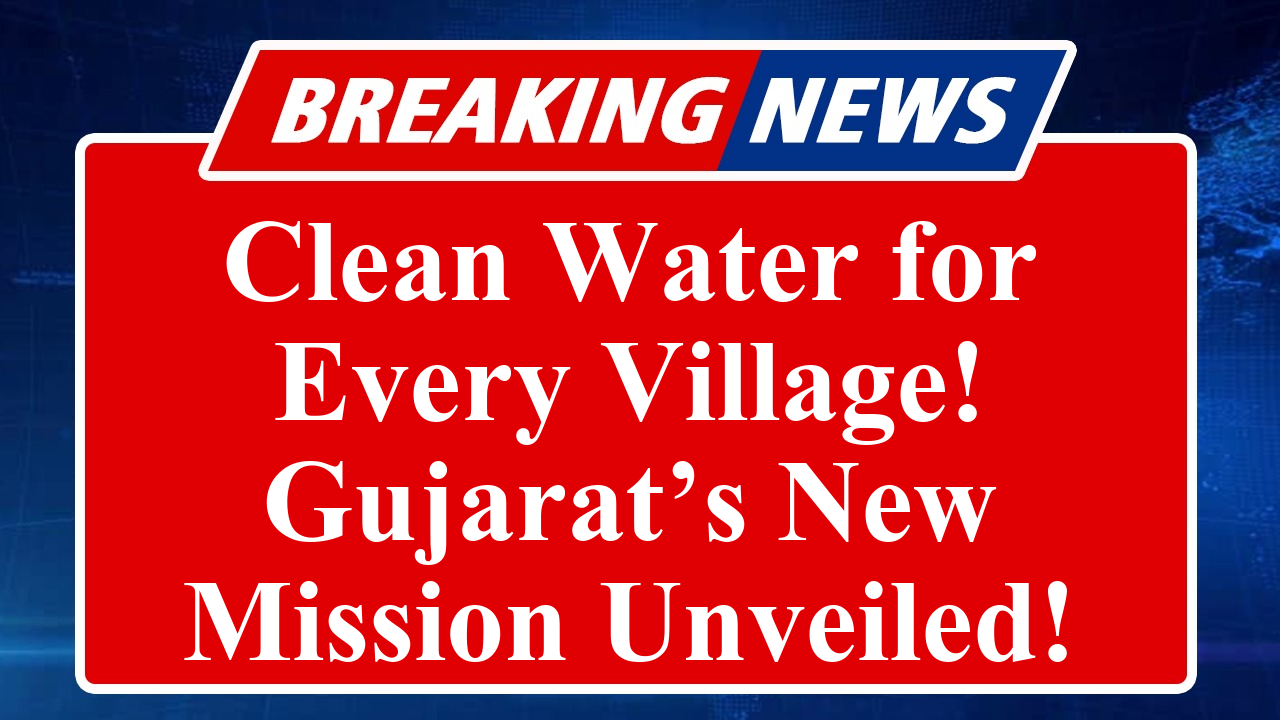Gujarat’s Clean Water Mission unveiled a new rural filtration scheme on June 25, 2025, aiming to provide clean drinking water to over 50 lakh rural households. Backed by advanced filtration technology and a ₹2,000 crore budget, the initiative targets 100% coverage by 2027. The scheme emphasizes sustainability, community involvement, and real-time water quality monitoring to ensure safe water access across Gujarat’s villages.
Gujarat’s New Rural Water Purification Drive
On June 25, 2025, the Gujarat government launched a transformative scheme under its Clean Water Mission, aimed at ensuring clean and safe drinking water for rural households. The initiative, announced by Chief Minister Bhupendra Patel, focuses on deploying advanced water filtration systems across 14,000 villages, targeting over 50 lakh households. With a budget of ₹2,000 crore, the scheme integrates cutting-edge reverse osmosis (RO) and ultra-filtration technologies to address water contamination issues prevalent in rural areas.
The program aligns with the broader objectives of the Jal Jeevan Mission, which seeks to provide tap water connections to all rural households in India. Gujarat, already a frontrunner with 92% coverage under the mission, aims to achieve 100% by 2027 through this scheme. According to official data, over 1.2 crore rural households in the state currently have access to piped water, but quality remains a concern due to groundwater contamination from industrial runoff and saline intrusion in coastal areas.
The new filtration scheme introduces community-managed water purification units, each capable of processing 10,000 liters of water daily. These units, powered by solar energy to ensure sustainability, will be installed in village clusters to maximize reach. The government has partnered with private firms to deploy IoT-based monitoring systems, enabling real-time tracking of water quality parameters like pH, turbidity, and total dissolved solids (TDS). This technology ensures immediate alerts for maintenance, reducing downtime and ensuring consistent supply.
Chief Minister Patel emphasized community involvement, stating that local panchayats will oversee operations and maintenance, with training provided to 20,000 rural youth. “This scheme is not just about infrastructure but empowering our villages to take charge of their water security,” he said during the launch in Gandhinagar. The initiative also includes a ₹500 crore fund for groundwater recharge projects to address depleting aquifers, a critical issue in districts like Kutch and Saurashtra.
The scheme has drawn praise for its focus on sustainability and innovation. Experts estimate it will reduce waterborne diseases by 30% in targeted areas, addressing a major public health challenge. However, challenges remain, including logistical hurdles in remote villages and the need for continuous funding. Opposition leaders have called for transparency in fund allocation and urged the government to prioritize marginalized communities.
The Gujarat Water Supply and Sewerage Board (GWSSB) will oversee implementation, with a target to install 5,000 filtration units by December 2026. Regular audits and public reporting mechanisms have been promised to ensure accountability. The scheme also integrates with national sanitation goals under Swachh Bharat Mission-Gramin, aiming for a holistic approach to rural water and hygiene.
Disclaimer: This article is based on official announcements, government reports, and expert opinions available as of July 6, 2025. Information is sourced from the Gujarat Water Supply and Sewerage Board, Jal Shakti Ministry, and credible news outlets. Readers are advised to verify details with official sources for the latest updates.

